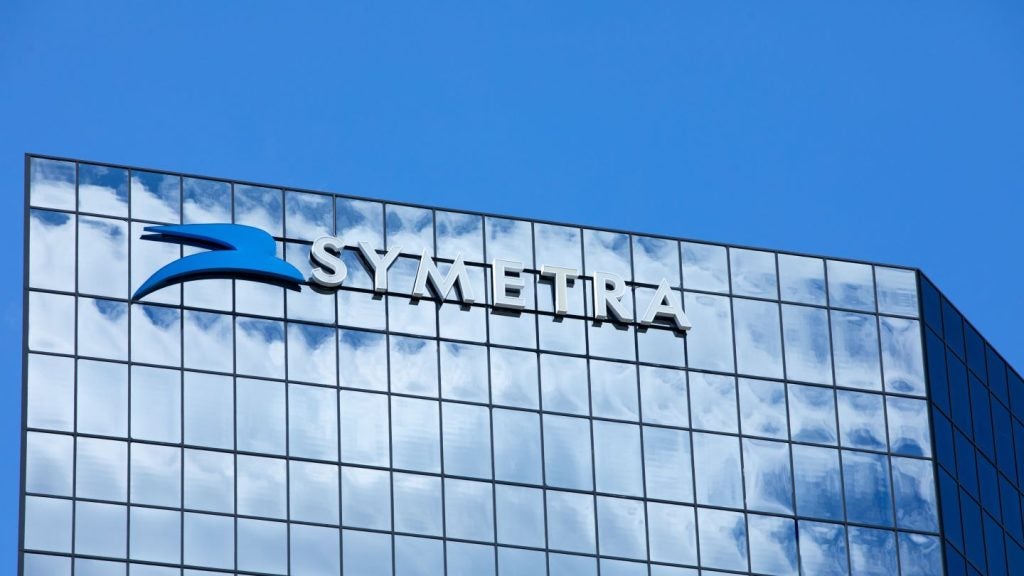The controversy sparked
by the Canadian government’s decision in its March 2012 budget
regarding Old Age Security (OAS) has put the country’s pensions
system firmly in the spotlight.
In the budget, announced on 29 March 2012, the
federal government said the entitlement age for OAS will gradually
rise from 65 to 67 starting from 2013.
The OAS is the first tier of Canada’s
three-tier pension system. Canadians who have worked for forty
years receive the full amount of OAS.
For low-income Canadians, the OAS is backed up
by the means-tested Guaranteed Income Supplement (GIS). The second
tier consists of the government sponsored contributory pension
scheme known as Canada Pension Plan (CPP) for Canadians outside the
province of Quebec, and Quebec Pension Plan (QPP) for
Quebeckers.
Established in January 1966 by Liberal Prime
Minister Lester Pearson, the CPP, which is a DB social insurance
programme, forms the mainstay of pension provision for most
Canadians.
Contribution to the CPP, by employers,
employees and the self-employed, is compulsory.

US Tariffs are shifting - will you react or anticipate?
Don’t let policy changes catch you off guard. Stay proactive with real-time data and expert analysis.
By GlobalDataThe third tier is personal pension plans,
corporate pension schemes, and public-sector pensions.
Budget controversy
The federal government caused a lot of
controversy by announcing in its March 2012 budget, which was
delivered on 29 March that the entitlement age for OAS will
gradually rise from 65 to 67 starting from 2023.
Finance Minister Jim Flaherty MP said in his
budget statement that, from 1 July 2013, Canadians who want to keep
working beyond the retirement age, will be able to defer the start
of OAS benefits, and receive a higher payout when they do
retire.
The government also provides pensions for
workers in the public sector including federal ministries and crown
corporations, namely organisations owned by the government, such as
Canada Post and the Canadian Broadcasting Corporation.
In the public sector, due to the power of the
unions, DB plans are still dominant. Yet these pension funds are
suffering from a similar crisis to corporate DB funds.
Applying industry-standard valuations, rather
than the government’s own formula, the C.D. Howe Institute, a
Canadian think-tank, puts the size of the public-sector pension
funding deficit at C$227bn ($227.6bn)
This is C$80bn more than the public-sector
funding deficit revealed in the government’s public accounts,
reveals the C.D. Howe Institute. In his budget speech, Flaherty
said the government “will ensure that government employee pension
plans are sustainable and financially responsible.”
The transcript provided by the Canadian Press
agency quoted him as saying that the government “will adjust these
pension plans to be more in line with those available to Canadians
working in the private sector.
We will also increase the cost-share ratio for
the pension plan for Members of Parliament and Senators, effective
[from] 1 January 2013.”
Over time, MPs and senators will be required
to contribute 50 percent of the cost of their pension funding, up
from 40 percent.
The C.D. Howe Institute speculates that the
government will eventually increase the contribution level for
public-sector employees from 40 percent to 50 percent.
It also aims to increase the age at which
government employees can take early retirement, says the
institute.
Reforming pensions
Reforming public pensions is a matter of great
controversy, according to Michel St- Germain, a partner at Mercer.
He says: “I see very little movement here away from DB.”
A December 2011 survey of senior executives
responsible for Canadian corporate pension plans by consultancy
Towers Watson identified a growing pessimism about the Canadian
pensions landscape.
Given the market’s fundamentals, it is easy to
understand why there is this sense of pessimism. For example, a
total of 65% of respondents running DB plans believe Canada is
experiencing a long-lasting pension crisis that will likely worsen
in the next year.
Towers Watson estimates the typical Canadian
DB plan was 86% funded at the start of 2011, and 72% funded at
year-end, leading to higher pension deficits.
Canadian DB pension plans also face a triple
challenge of low investment returns, highly volatile markets, and
an ageing population.
“The number of Canadians reaching 65 is larger
than the number of 25-year-old Canadians,” says Michel St-Germain,
a partner at consultancy Mercer.
“About 50% of Canadian non-unionised
private-sector companies have closed their DB plans and moved to DC
plans,” says St- Germain.
“DB plans incur fixed annuity liabilities, yet
their funds are invested in volatile assets. Eventually, all
non-unionised private-sector firms will move to DC plans.”
Accounting rules
“Accounting rules have recently changed,
putting focus on DB plans’ financial volatility,” says Sue Reibel,
Manulife Financial Canada’s senior vice-president and general
manager for group retirement solutions.
“A plan’s funded status may previously have
only been reported in the notes to the financial statements. “From
January 2013, the funded status must be disclosed as an asset or
liability on the balance sheet and, from then on, changes in the
funded status will be recorded in the
Other Comprehensive Income (OCI) statement.”
St-Germain says: “The message Mercer gets from Canadian
publicly-held companies’ boards is that shareholders should
not be required to take the risk of liability for DB
pensions.”
Subsequently, St-Germain explains that
Canadian pension schemes are ‘de-risking’ – by moving DB plans to
DC – or, if staying with DB, moving assets to more conservative and
less volatile investments.
One option for pension plan sponsors is to buy
longevity insurance.
“Sun Life will remove the longevity risk from
DB plan sponsors,” says Tom Reid, Sun Life Financial Canada’s
senior vice-president for group retirement services.
“They give us the plan members’ data, and we
run sophisticated models, for example, examining the link between
postal codes and longevity. Then we negotiate a price with the plan
sponsor.”
An option for smaller employers who cannot
afford DB or DC plans is to set up group registered retirement
savings plans (RRSPs).
These act as tax-deferred savings plans in the
same way as individual RRSPs that employees who do not belong to
company schemes, and the self-employed, can set up.
Employers deduct employees’ group RRSP
contributions from payroll, but aren’t required to contribute
themselves. Employees are also not obliged to join. Group RRSPs are
portable, and benefit from the lower costs of a larger fund,
compared o the high management cost of individual RRSPs.
The downside is that, unlike DC plans, group
RRSPs are not locked-in. “Employees can withdraw funds from group
RRSPs, making for a lot of churn,” says Ron Sanderson, the Canadian
Life and Health Insurance Association’s (CLHIA) policyholder
taxation and pensions director.
Uptake of group RRSPs has been low, largely
because employers do not want the burden of being the sponsor for
the plans.
“Employers, as group RRSP sponsors, have
obligations such as ensuring that employees understand the plan and
that the investments are appropriate,” says Reibel.
Private sector challenge
“With more and more Canadians working for
small private-sector companies, fewer people are covered by pension
plans,” says CLHIA president Frank Swedlove.
He adds that “60% of workers in Canada’s
private sector have no company pension plan, leaving them with
individual RRSPs as the only option.
But the take-up of individual RRSPs by workers
not covered by pension plans has been lower than expected.”
In December 2010, Canadian Finance Minister
Jim Flaherty MP, in agreement with Canada’s provincial finance
ministers, announced a framework for a new pension product – Pooled
Registered Pension Plans
(PRPPs) – with the aim of making retirement
savings more accessible for private-sector employees.
In November 2011, Bill C-25, the PRPP
legislation, was introduced in the Canadian House of Commons.
“The Bill is at second-reading stage, and it
will pass,” says St-Germain.
PRPPs will be managed by regulated financial
institutions, and will be open to multiple employers across
different industries as well as to the self-employed.
“The financial institution offering the PRPP
is the sponsor, not the employer,” says Reibel.
“The employer’s role is reduced to selecting
which financial institution’s PRPP they will use, managing payroll
deductions and telling the financial institution about changes in
employees.
Also, now you can put multiple SMEs in the
same plan, and, as there are more participants, the cost is
reduced.”
Once the House of Commons passes Bill C-25,
the small number of private-sector companies subject to federal
pension regulations, such as airlines, will be able to introduce
PRPPs.
Localised response
However, as each Canadian province has its own
pension regulations, the provinces will have to individually
legislate for introducing PRPPs.
“The federal government’s legislation says
that PRPPs have to be provided at low-cost, although the costs
haven’t been specified yet,” says Swedlove.
He explains that the insurance industry
believes it can meet the government’s requirement.
“The management cost of large company schemes
is 60-80 basis points, and the insurance industry thinks it can
offer PRPPs at similar levels.
This compares to the 150-250 basis point cost
for individual RRSPs. PRPPs will offer around six different
investment options, including target date plans, says
Sanderson.
Target date funds shift contributors’ assets
to less risky investments as they approach their retirement
date.
Although Bill C-25 says that employer
participation in PRPPs will be voluntary, individual provinces have
to determine in their legislation whether to compel employers to
provide the plans.
All employees in a participating firm will be
automatically enrolled in a PRPP, but will be able to opt out.
In March 2012, Quebec became the first
province to announce plans for PRPP legislation.
In Quebec, all employers with five or more
employees and no existing pension plan or group RRSP will have to
provide their staff with access to PRRPs , known as voluntary
retirement savings plans (VRSPs) in Quebec.
However, firms will not be obliged to
contribute to VRSPs. “Quebec will make VRSPs available from January
2013, and from January 2014 every Quebec employer not already
providing pension plans will be required to offer VRSPs,” says Sun
Life’s Reid.
“Employees will be enrolled at a default
contribution rate of 2% in 2013, rising to 4% in 2017. Target date
funds will be the default investment option.”
View in ontario
The federal government’s PRPPs plans received
a blow in March 2012, when the Ontario government said it was
concerned that PRPPs might replace other forms of retirement
savings instead of expanding the total amount of retirement savings
in Canada.
Ontario is also concerned that compulsory
contributions for employees of companies implementing PRPPs might
not be sufficiently flexible to allow for life events such as
divorce or financial hardship.
It raised doubts as to whether PRPPs will be
low-cost, particularly given that provinces would need to create
licensing and regulatory regimes for the new pensions, and
consequently the cost of which would be passed on to
plan-holders.
While stating that it would cooperate with
other provinces and the federal government in developing the PRPP
model, Ontario said the introduction of PRPPs should be tied to
mandatory increases to employee and employer contributions to the
Canada Pension Plan (CPP).
However, the federal government has not
demonstrated any appetite to expand funding of the CPP, a
compulsory state-sponsored scheme to which all employees, employers
and the self-employed have to contribute.
It is also important to note that insurers
account for 90% of the Canadian capital accumulation plan (CAP)
market, with banks and investment firms managing the remainder.
CAPs consist of DC pension plans, group RRSPs,
and deferred profit-sharing plans (DPSPs).
Often attached to group RRPSs, DPSPs allow
employers to distribute their profits to staff on a tax-deferred
basis.
Employees subsequently become liable for tax
after withdrawing funds from DPSPs, in the same way as withdrawing
from RRSPs.
“The Canadian insurance industry sells around
2,000 CAP plans a year, comprising start-up plans and plans that
employers move from one provider to another,” says
Sue Reibel, Manulife Financial Canada’s senior
vice-president and general manager,
for group retirement solutions. “Over 500,000
Canadian firms don’t have workforce plans,” says Reibel.







